 Oceanic Submersibles 1945-1974:
Oceanic Submersibles 1945-1974:
46 ordered Programme 1943, 16 completed: Amphion, Astute, Auriga, Aurochs, Alcide, Alderney, Alliance, Ambus, Anchorite, Andrew, Affray, Aeneas, Alaric, Artemis, Artful, Acheron. Cancelled under completion: Ace, Achates
WW2 British Submersibles:
X1 | Odin | Parthian | Rainbow | Thames | Swordfish | Porpoise/Grampus | Shark | U class | T class | S class | U class 1940 SH | P611 class | V class (U 1941/42 LH) | X-Craft | A classThe “A class” or Amphion, were the last submersibles planned by the British admiralty in WW2, designed for Operations in the Pacific. Indeed after Pearl Harbour the realization of a war in the pacific urged the need for a new submarine types with better range, surface speed, diving depht and to reach the latter goal, an all-welded hull. It had also to retain a ten torpedo tubes capability, albeit wartime experience had it rearranged, better accomodations and being “tropicalized”. The Amphion class were laid down in 1943 as many believed they would be ready for the Pacific operations in 1945 but it never happened. Instead they were only launched in 1945 and completed postwar.
Laid down in 1943-45 they were completed in 1945-48. Thus, none was completed in time for war service and 30 on the 56 ordered in 1943 were cancelled. They were the last British submarine planned with a deck gun, and had a long career after streamlining and powerplant modernization, a cold war conversion to new standards. Thanks to this, they formed the core of the early cold war British submarine force until 1974. They represent at the same time the end of the WW2 submarine lineage and start of the cold war lineage. #ww2 #coldwar #royalnavy #submarine #submersible #amphionclass
Development
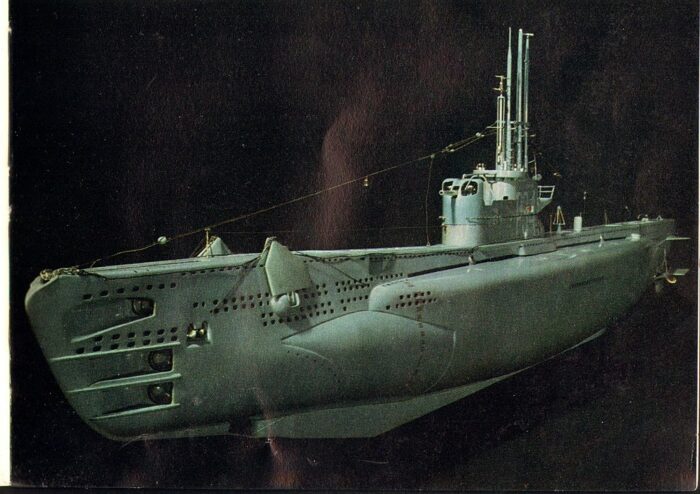
Science Museum image, Amphion class, 1944
The Amphion class were ordered by the British Admiralty in 1943 for the Pacific theatre, seeing that they would need a new type of submarine to return in the area, since the Atlantic and Mediterranean ahd all priority until then, the RN only capable to sent Force Z in december 1941, promptly disposed of by the Japanese. The Eagle and Light aircraft carriers of the 1942 programme were also in part designed for the Pacific.
As for the new Amphion or A class, they were originally designed to replace the S-class and T-class submarines. The latter were recent, some even still being completed in 1943, but they were seen as too slow, not deep diving enough for Pacific waters. They were however designed around the same hull as the T class and arranged for a fast a simple construction, using much of the materials and equipment used already for the T boats, including thpse cancelled. The bow was what was most criticized from the T class, and the A class started with a brand new flared bow for better surfaced sea performance. They were also given an effective air conditioning system, and had completely redone internal accomodations for better habitability, for a crew between 60 and 68.
Originally, 46 submarines were ordered, only 18 launched, including ten by Vickers-Armstrong (Barrow-in-Furness) sixteen commissioned, and two half-completed hulls being used for crush testing. The class was designed for quick construction and featured an entirely welded hull inlike the mixed constructed T class, the latter pioneering these techniques. More so, they were to be fabricated in sections like the Type XXI, although it is dubious there was any intel about this in 1943. Thus it was calculated to take 8 months from keel-laying to launching (15 months for the T class) but this was done too late, as the setup for construction in 1944 was much delayed. In fact Amphion was only launched in August 1944, Astute in January 1945, both making sea trials in the dying days of the war.
The Amphion class were the last submarines designed in Great Britain during World War II alongside the X-craft designed to sink Bismarck and other axis ships. Wartime experience showed submarines needed in reality larger patrol areas than foreseen, especially in the Far East, but even in the Mediterranean. The A class were also designed to exceed the T class in range while having better accommodations for longer missions.
Design of the class
Hull and general design
The A class significantly larger than the T class, with a displacement of 1,385 tons surfaced and 1,620 tons submerged (versus 1,290 tons surfaced and 1,560 tons submerged for the T class). They were longer at 280.5 ft (85.5 m) over all versus 276 ft 6 in (84.28 m), but narrower at 22.3 ft (6.8 m) versus 25 ft 6 in (7.77 m), but draftier at 16.8 ft (5.1 m) versus 13/14 fr.
The A class approached the double hull type and the circular section welded pressure hull of 4-in plating allowed a design depth of 500ft and test depth of 600ft. It should be noted that they could operate at 500ft, the same figure quoted for Oberon to Rainbow representing an emergency maximum (some damage was to be expected if these exceeded the test depth of 200 to 300ft).
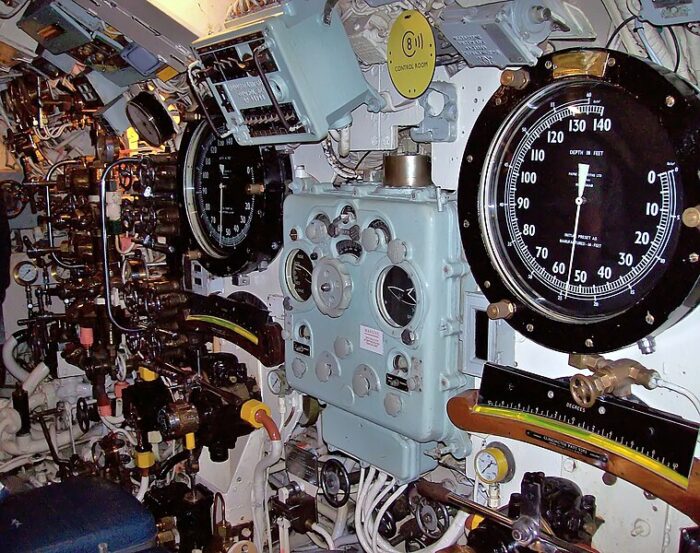
Control room, HMS Alliance
Apart the brand new bow shape, cleaner and more seaworthy, the conning tower was an evolution of the one on the late T class (3rd group) and open with a platform to place a 20 mm AA gun and LMGs.
The torpedo tubes were completely rearranged as well and partly driven by war experience. Instead of a massive 10-torpedo bow spread, there were sixc tubes forard four aft in a more balanced approach, but with non-reloadable external tubes, four in all, in the outer hull.
Powerplant

Not much change compared to the previous T-class. By defauled they sported four 8-cylinder Vickers supercharged diesels and two electric motors. In some vessels however from another yard, namely Acheron, Aeneas, Affray, Alaric, Artemis and Artful had Admiralty supercharged diesels instead, as Abelard, Acasta, Ace and Achates: which had 6-cylinder Admiralty supercharged diesels instead,however the electric engines were the same for all.
This powerplant delivered 4,300 hp surfaced and 1250 hp underwater, but the 6-cylinder variants (Abelard, Acasta, Ace, Achates) were rated for only 3,400 hp and 1250 hp. This was not a success.
They were capable of 18.5 knots (34.3 km/h) surfaced and 8 knots (15 km/h) submerged. To compare, the T class were given 1,250 hp (930 kW) diesels and 1,450 hp electric motors for 15.5/9 knots, so quite an increase of power for surface actions, at the expense of underwater speed. It was thought to be compensated by a greater safety depth of around 600 feet.
Sources diverged about oil carried and autonomy. In general they carried 165 tons of diesel oil in normal conditions, which could be ported up to 219 tonnes. Of this fuel, 60 tons was in internal and 105 tons in external tanks, while an extra 54 tons could be carried in the main tanks. Standard range was excellent, at 10,500 nautical miles at 11 knots surfaced and 90 nautical miles at 3 knots. To compare the T class were capable of 8,000 nmi at 10 knots. So this was also a substantial increase. They had a brand new refrigeration system and two huge air conditioners, and all her accommodation was placed as far away from the engine room as possible.
Armament
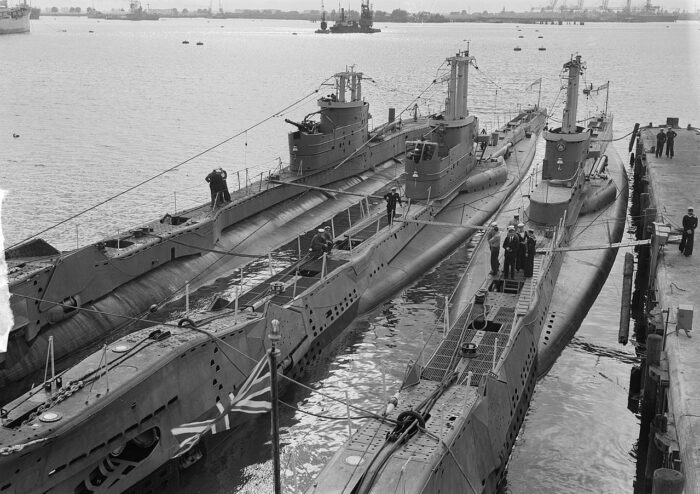
HMS Andrew, Aenas and Trespasser at Rotterdam in 1948.
They were the last submarines designed in Britain with deck guns. A 20mm Oerlikon was mounted and the four external TT comprised 2 bow and 2 stern. The torpedo outfit was 20 with 6 reloads for the internal bow tubes and 4 for the stern ones. Alternatively, 18 M2 mines could be carried.
The 4-in Mk XXII was later removed, several boats receiving a 4in/33 QF Mk XXIII in its place. All were intended to have ‘snorts’ though these were not always fitted initially. Compared with previous British submarines, diving time, radar arrangements and sound insulation of auxiliary machinery were much improved. It was found that in certain sea conditions the first boats had a very undesirable rolling motion, and it was necessary to separate the port and starboard main tanks, to relocate the external fuel tanks and to fit a bow buoyancy tank. Excessive vibration of the periscopes had also to be corrected.
There were mild differences in armament, with Alliance, Amphion, Astute having their 4-in/40 QF Mk XXII deck gun and singl 20mm/70 Oerlikon Mk IV, and ten tubes, (4 bow, 2 stern, 2 exterior bow, 2 exterior stern, 20 torpedoes or 18 М2 mines) while the remainder had the 4-in/40 S Mk I, main gun, 20mm/70 Mk VII S/M AA gun, and same.
Torpedo Tubes
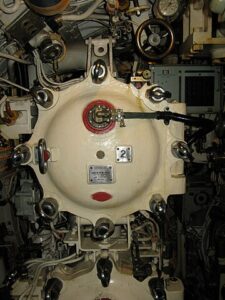 The primary torpedo used by the Amphion class was the 21-inch Mark VIII**. The Mark VIII was the first burner-cycle torpedo in service developed from 1925 with a production from 1927. The improved Mark VIII** was the most used in WW2 RN submarines, with 3,732 fired by September 1944, 56.4% of the total of all models and still kicking asses by 1983 in the Falklands war (Belgrano). It was on par with the German G7e in the Atlantic, and US Mark 14 (after corrections) in the Pacific.
The primary torpedo used by the Amphion class was the 21-inch Mark VIII**. The Mark VIII was the first burner-cycle torpedo in service developed from 1925 with a production from 1927. The improved Mark VIII** was the most used in WW2 RN submarines, with 3,732 fired by September 1944, 56.4% of the total of all models and still kicking asses by 1983 in the Falklands war (Belgrano). It was on par with the German G7e in the Atlantic, and US Mark 14 (after corrections) in the Pacific.
This 1,566 kg (3,452 lb) model, 21 ft 7 in (6.579 m) long, carried a 365 kg (805 lb) Torpex warhead and used a Brotherhood burner-cycle engine for a range of 4,570 meters (5,000 yards) at 45.5 knots (84.3 km/h; 52.4 mph) or 6,400 meters (7,000 yards) at 41 knots (76 km/h; 47 mph). It had a greater propulsive efficiency than any contemporary torpedo of similar size. Shortages of the Mark VIII early in the war pushed many T class to be equipped with much older Mark IV models.
The latter was a wet-heater 1916 model Weighting 3,206 lbs. (1,454 kg) for 22 ft 7.5 in (6.896 m) in lenght,
with a 515 lbs. (234 kg) TNT warhead, capable of 8,000 yards (7,300 m) at 35 knots, 10,000 yards (9,150 m) at 29 knots or 13,500 yards (12,350 m) at 25 knots. It was slow, but its range was revised in WW2 with a new setup for all Mark IV* to 6,000 yards (5,500 m) at 40 knots and 9,500 yards (8,700 m) at 35 knots.
The Mark VIII was primarily fitted with a contact pisto detonating upon impact until a non-contact magnetic pistol, the CCR (Compensated Coil Rod) was developed and fitted. Hioweger like for the Mark 14 and German models, it gave endless troubles, being withdrawn. Development problems with postwar torpedoes had the VIII lingring in service with the T class, A class, and all diesel-electric subs, even the first British SSNs until 1971 and slow introduction of the Mark 23 wire-guided torpedo.
⚙ specs. Mark VIII** TORPEDO
Weight: 1,566 kg (3,452 lb)
Dimensions: 21 ft 7 in (6.579 m)
Propulsion: Brotherhood burner-cycle engine
Range/speed setting: 4,570 m/45.5 kn, 6,400 m/41 kn
Warhead: 365 kg (805 lb) Torpex
Guidance: Straight, initial training setup
4-in Mk XXII
All A-class submarines were initially fitted with a single 4-inch (102 mm) deck gun 4 inch QF Mark XII or XXII (interchangeable) on the same S1 mounting above the casing and forward of the conning tower, placed on an elevated position in front of the conning tower in a characteristic breastwork rotating with the gun. It was later removed, several boats receiving instead the gun described below. No gun shield, some were improvized.
4-in/33 QF Mk XXIII

Development of the Mark XXIII started in 1942 as a lighter replacement for the QF 4-inch gun Mark XXII derived from a 1911 model. It entered service after the end of the war in 1945 and fitted to Amphion-class submarines completed from October and some T-class submarines also postwar. This became thus the very last submarine deck gun in the RN.
When the Amphion class were modernized between 1955 and the early 1960s, streamlining the conning towers and casings meant the removal of the deck gun, but still keeping its underlying supports in case it was required to mount it again. These guns saw action in the Indonesia–Malaysia confrontation from 1962 to 1966, refitted with these Mark XXIII guns in counter blockade-running Indonesian junks, HMS Andrew last firing her own on 2 December 1974. Only 31 of these guns were made, and the one from St Andrew was preserved (photo).
⚙ specs. Mark XXIII Deck Gun
Weight: 1,568 lb (711 kg) barrel and breech
Dimensions: 137.6 in (3.495 m), barrel 132.2 in (3.358 m) bore (33 cal.)
Shell: Fixed QF 35 lb (15.9 kg) or 38.5 lb (17.5 kg) 102 mm
Breech: horizontal sliding-block
Mount: 4-0 Inch SII Mounting -10 to +30 degrees/360° traverse
Rate of fire: about 15 rounds per minute at 1,791 ft/s (546 m/s)
Maximum range: 12,080 yd (11.05 km) 35 lb HE shell at 30 degrees:
M type Mark II Mines
The M Mark II designed in WW2 was formerly known as the “Type G” and designed as a submarine launched ground mine. Two replaced a single torpedo and they used a CR magnetic trigger
A contract for 2,000 was placed in 1940 but production was halted in November 1942, with 1,310 made and in storage. They equipped T, S classes as well as the A class postwar.
⚙ specs. Mark II M Type mine
Weight: 1,760 lbs. (798 kg)
Payload: 1,000 lbs. (454 kg) minol charge.
Delivery: Laid at 8 knots in 5-60 fathoms (9-110 m)
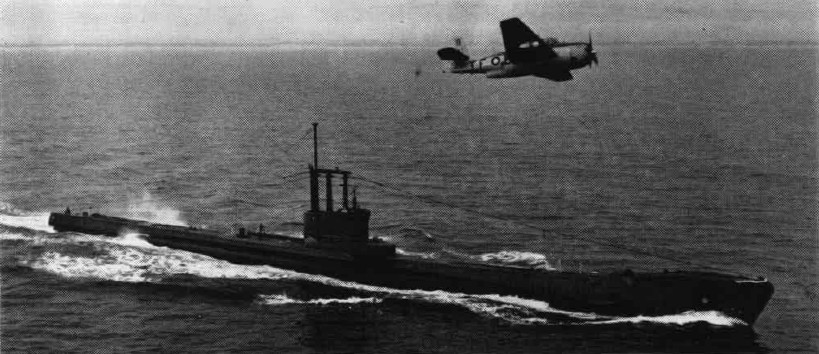
HMS Artful, the last completed, flew over by an ASW Avenger AS3, 1950 (before conversion)
Sensors
Type 267W radar:
These were fitted in submarines as an air warning radar operating in VHF-band, and surface warning radar operating in X-band with separate aerials. Only one frequency band wa susable at all times. Two separate aerial outfits could rotate at a time or together, synchrone.
Frequency: 9,65 to 9,7 GHz; X-band 214 MHz, VHF-band.
PRF 500 Hz, pulsewidth 1.2 µs, peak power 30-100 kW (18-60 W average), beamwidth 4.5°/52°, rotation 4.5-5 rpm.
Type 138 Sonar:
Locatunder the forward chin, the Type 129 had a blind stern arc. On the A class from the start it was added a passive and manually-trained listening hydrophone to cover this rear blind arc, and complement the more versaitle Type 129.
Type 152 sonar:
The Type 152X was trialled in HMS Alcide. As a prototype it added a transducer operating at 30 to 65 kHz for mine detection. It went no further than the prototype and instead efforts were made to improve the Types 129 and Type 138 with Types 169 and 168. As refitted and modernized, the Amphion class had the type 267W radar, type 186, type 187, and type 197 sonars to stay relevant until the 1970s.
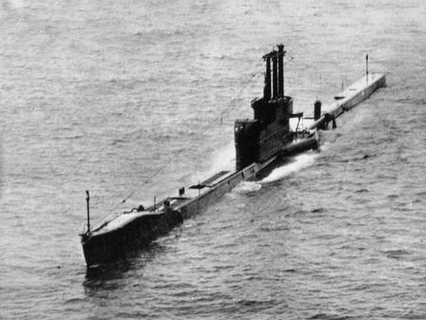

HMS Amphion as completed, old author’s illustration.
⚙ A class specifications |
|
| Displacement | 1,385 tons surfaced, 1,620 tons submerged |
| Dimensions | 280.5 x 22.3 x 16.8 ft (85.5 x 6.8 x 5.1 m) |
| Propulsion | |
| Speed | 18.5 knots (34.3 km/h) surfaced, 8 knots (15 km/h) submerged |
| Range | 10,500 nm/11 knots surfaced, 16 nm/8 knots submerged |
| Armament | 6× 21 in bow TTs, 4× 21 in stern TTs, QF 4 in gun, 20 mm AA, 3x MGs |
| Max depth | 500 feet (150 m), crush 600 ft |
| Sensors | type 267W radar, type 138 sonar |
| Crew | 61 officers and men |
Construction
HMS Abelard and Acasta were launched at Portsmouth DYd,
HMS Ace and Achates were manufactured at Devonport DYd,
HMS Adept was launched at Chatham DYd,
HMS Agate, Aggressor, Agile, Aladdin and Alcestis were from Cammell Laird,
HMS Asgard, Assurance and Astarte were ordered to Scotts,
HMS Andromache, Answer, Antaeus, Antagonist, Anzac, Aphrodite, Approach, Arcadian, Ardent, Argosy and Atlantis were all from Vickers-Armstrong in Barrow,
HMS Admirable, Adversary, Asperity, Austere, Awake and Aztec were from Vickers-Armstrong at its Tyne Yard.
Of these, Ace and Achates hwere launched in 1945, but never completed and instead used for ship target trials. Those and Abelard, Acasta, would have had 6-cylinder Admiralty supercharged diesels as the 8-cylinder type was in short supply. Less powerful at 3400 bhp they would have been a knot slower. A further 20 A class submarines were projected by late 1944, but orders were never placed. On 56 planned in 1943, 16 were completed in 1945-47, 2 cancelled before completion (used as targets) and 28 were scrapped on slip before launch.
modernization to Cold War Standards
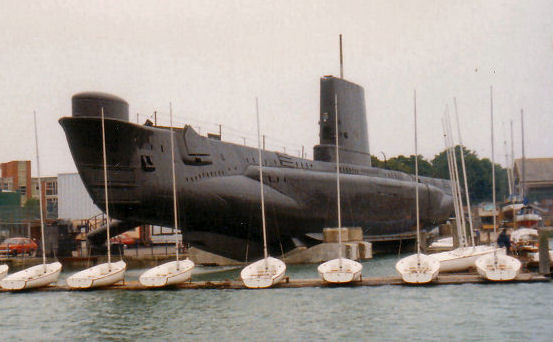
After World War II the A class were judged moverall more satisfying than the T class, but like the latter, all were retained for service overseas. Both would be streamlined and modernized, the T class also being exported to vaious Nations. Israel retained their longer than anyone else. The small war emergency, S, U, V class however were not seen as worth retaining in the new context and werd discarded soon. The T and A were rebranded then “Overseas Patrol Submarines”.

As Britain obtained the Type XXI and a late Type IX a snort mast based on the latest German schnorkel was added, as well as a new a radar usable from periscope depth, and a new IR night periscope added to the A and surviving T-class submarines. In the early 1950s the admiralty decided to swap from surface ships to hunt down Soviet submarines. It was a radical change and for this they needed to be at last on par with what the USS had in drove back then, the Project 613 (Whiskey) class. In January 1948 this new operational function was announced officially, and that their precise role would be to hunt down Whiskeys or Zulus slipping out of their bases in Northern Russia to prey on British and Allied merchant lanes.
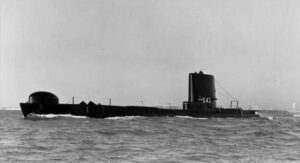 In April 1948, the Assistant Chief of Naval Staff Rear-Admiral Geoffrey Oliver proposed that British submarines could take an even more offensive rather than only defensive role. IHe suggested that of properly modernized, they attack Soviet submarines off the Northern Russian coast, mining these waters if needed. As the surface fleet was cut down and radically reduced, he commented could allow the Royal Navy a cost-saving, proactive stance with “getting to the enemy on his home ground” as he puts it.
In April 1948, the Assistant Chief of Naval Staff Rear-Admiral Geoffrey Oliver proposed that British submarines could take an even more offensive rather than only defensive role. IHe suggested that of properly modernized, they attack Soviet submarines off the Northern Russian coast, mining these waters if needed. As the surface fleet was cut down and radically reduced, he commented could allow the Royal Navy a cost-saving, proactive stance with “getting to the enemy on his home ground” as he puts it.
Thus, the A and T classes were completely redesigned and modernized for this new role between 1955 and 1960. It was necessary to complete rebuild their forward and after hull section and radically streamlined these, but also lengthening, streamlining the upper decks and expecially their conning towers which became a fin. This of course included the removal of deck guns (yet keeping the attachements in case). The goal was to massively improve underwater speed and reduce their noise. For this, the removal of noisy external torpedo tubes was necessary, reducing their torpedo load to six, four forward two aft. It was to be compensated by a new generation of homing torpedoes. It was necessary to give them a greatly improved sonar as well, to listen and detect Soviet submarines as far as possible.
The hull streamlining comprised a fin replaced with a larger 26 feet 6 inch high and far more streamlined sail made of aluminium to not compromise stability. This gave a much better operipheral vision from the bridge and was appreciated; The size was also dictated by the larger snorkel, radars and masts. The purpose of these modifications was to make the submarine quieter and faster underwate and the wireless transmitting aerial was supported on a frame behind the fin, later replaced with a whip aerial on the starboard side of the fin, rotated hydraulically to a horizontal position.
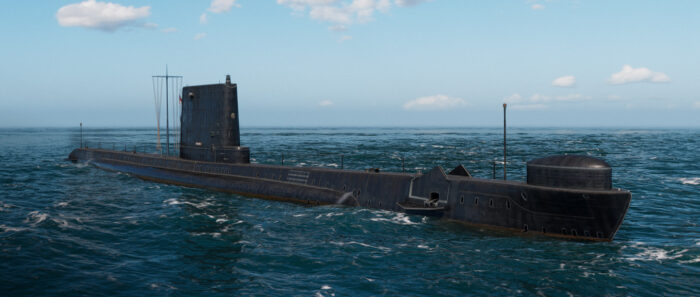
Wow’s impression of HMS Alliance, streamlined
The conversion took about two years, but soon after entering service, HMS Affray was lost in 1951 with all hands and mysterious circumtances. Due to this tragic event, all the Amphion class subs were briefly confined to port, pending investigation. The A class appearance was indeed quite different.
Not all 16 boats were converted, two were discarded. Only Acheron, Aeneas, Alaric, Alcide, Alderey, Alliance, Ambush, Amphion, Anchorite, Andrew, Artemis, Artful, Astute, Auriga were so converted.
As conways 1947-95 states:
Artful underwent modernisation in 1955-56, along the lines of the “T Conversions’, with enlarged batteries and rebuilt bow and stern and streamlined fin, etc but retaining the original motors. All except Awrochs had undergone a similar conversion by 1960. The Mk 8 torpedoes were subsequently replaced by Mk 23, and some boats could carry twenty-six Mk 5 mines. Alliance was put on concrete trestles at HMS Dolphin, Gosport, in 1979 as a permanent submarine memorial.
Revised specs 1955
Displacement: 1,385/1,620 tons surf/submerged
Dimensions 280.5 x 22.3 x 16.8 ft (85.5 x 6.8 x 5.1 m)
Top Speed 18.5/8 kts surfaced/sub
Range: 10,500 nm/11 kts, 16 nm/8 kts surf/sub
Test depth: 500 feet (150 m)
Crew: 61
Armament: 4 × 21 inch (533 mm) bow TTs, 2 stern, 16 torpedoes/26 mines.
Before being scrapped Aeneas was lent to Vickers for trials with the SLAM (Submarine Launched Antiaircraft Missile). This is a TV-guided version of the Blowpipe missile, mounted in the fin and controlled from below, to provide a defence against helicopters. The system was not adopted by the RN and after the tials the boat was scrapped.
They took part in the Indonesia–Malaysia confrontation with some rearmed with their QF 4-inch Mk XXIII gun deck gun or a 20mm autocannon to counter blockade running junks. The A class served for almost three decades, making the backbone of the Royal Naval Submarine Service, gradually replaced with the Porpoise and Oberon classes. The last operational was HMS Andrew decommissioned in 1974, but 1977 is often seen also as the true end of the class, just a few years short of the Falklands war, which is remarkable for a 1942 submarine design.
Career of the A class
 Amphion (P439/S39/S43)
Amphion (P439/S39/S43)
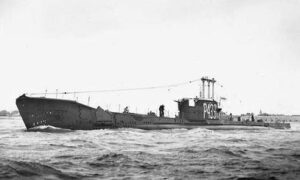 HMS Aurochs was launched on 31 August 1944, and alread from June her construction and completion was overseen by Cdr. Ronald Hugh Dewhurst. She was commissioned on 8 February 1945 and she went to many trials until the end of the war. She arrived at Holy Loch for preliminary trials and on the 15th returned to to Barrow for inspection and fixes. On 27 March she preformed and succeeded with her acceptance trials, and sailed for Holy Loch escorted by HMCS Monnow. On the 28th she started a work-up period of trials and training off the Scottish West coast as as lead boat it took longer then normal.
HMS Aurochs was launched on 31 August 1944, and alread from June her construction and completion was overseen by Cdr. Ronald Hugh Dewhurst. She was commissioned on 8 February 1945 and she went to many trials until the end of the war. She arrived at Holy Loch for preliminary trials and on the 15th returned to to Barrow for inspection and fixes. On 27 March she preformed and succeeded with her acceptance trials, and sailed for Holy Loch escorted by HMCS Monnow. On the 28th she started a work-up period of trials and training off the Scottish West coast as as lead boat it took longer then normal.
On the 31st she was back at Holy Loch for a propeller change. Frim 2 April 1945 conducted speed trials on the Arran measured mile then exercises in the Clyde area, noise trials in Loch Goil and on 7 April proceeded back to Holy Loch. On the 11th she departed for trials and exercises with HMS Hastings and back. On 17 April she conducted gunnery trials and exercises in the Clyde area. On 19 April she headed for Scapa Flow escorted by HMS Duncan. On 21-25 April HMS Trustyserved as target during radar exercises for Amphion.
On 27 April she left Scapa Flow for Holy Loch escorted by HMS Shikari and met near the Trodday lighthouse HMS Trespasser and HMS Tactician for combiend exercises.
On 30 April she sailed to to the torpedo firing range at Arrochar and the next days conducted torpedo discharge trials until 30 May, after completion of these she proceeded back to Holy Loch to be drydocked in AFD 7 for bottom cleaning, painting.
From 4 June 1945 she was back to Arrochar for more torpedo discharge trials then full power trials, minelaying trials, vibration measuring trials, engine trials and on 13 July she returned to Holy Loch. Three days later she conducted vibration measuring trials in the Clyde area and back to Barrow for modifications until the war ended. No logs for the rest of her career. She was modernized completely and decommissioned eventually in 1970, Sold for scrap on 24 June 1971, BU Inverkeithing in July.
 Astute (P447/S47/S45)
Astute (P447/S47/S45)
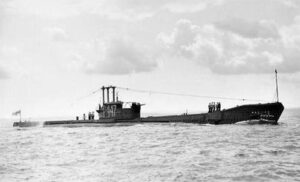 Astute was Laid down on 4 April 1944, launched on 30 January 1945 and Commissioned on 30 June 1945; She arrived at Halifax, Nova Scotia on 11 April 1950 for six-week of training, until 1st July. After fixes done in the yard (the war ended) she returned to various training sessions and spent 21 months in 1955–56 at Halifax as part of the Canadian submarine squadron, leaving on 10 December 1956. She was completely modernized.
Astute was Laid down on 4 April 1944, launched on 30 January 1945 and Commissioned on 30 June 1945; She arrived at Halifax, Nova Scotia on 11 April 1950 for six-week of training, until 1st July. After fixes done in the yard (the war ended) she returned to various training sessions and spent 21 months in 1955–56 at Halifax as part of the Canadian submarine squadron, leaving on 10 December 1956. She was completely modernized.
She took part in the Cuban Missile Crisis with HMS Alderney in the Halifax-based 6th Submarine Squadron, deployed to the North-East of the Grand Banks to prevent Soviet submarines to veer through the Atlantic to Cuba. This was too late for some Foxtrot class subs. No logs for the rest of her career. She was sold for scrap on 1 October 1970.
 Auriga (P419/S19/S69)
Auriga (P419/S19/S69)
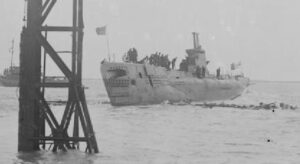 She was laid down on 7 June 1944, launched on 29 March 1945 and commissioned on 12 January 1946. In 1953 she took part in the Fleet Review to celebrate the Coronation of Elizabeth II. She was modernized. By March 1961, she took part in a combined naval exercise with the USN off Nova Scotia. She departed Canada on 25 April 1961 after a 18-month tour with the 6th Submarine Division in Halifax but did not deployed during the Cuban missile crisis. No more records. Sold to be broken up for scrap on 14 November 1974. Scrapped at Newport in February 1975.
She was laid down on 7 June 1944, launched on 29 March 1945 and commissioned on 12 January 1946. In 1953 she took part in the Fleet Review to celebrate the Coronation of Elizabeth II. She was modernized. By March 1961, she took part in a combined naval exercise with the USN off Nova Scotia. She departed Canada on 25 April 1961 after a 18-month tour with the 6th Submarine Division in Halifax but did not deployed during the Cuban missile crisis. No more records. Sold to be broken up for scrap on 14 November 1974. Scrapped at Newport in February 1975.
 Aurochs (P426/S26/S62)
Aurochs (P426/S26/S62)
 Aurochs was laid down on 21 June 1944, launched on 28 July 1945 and commissioned on 7 February 1947. In 1953 she took part in the fleet review for Elizabeth II under Lieutenant-Commander A. G. Tait. She was one of the two of her class not modernized.
Aurochs was laid down on 21 June 1944, launched on 28 July 1945 and commissioned on 7 February 1947. In 1953 she took part in the fleet review for Elizabeth II under Lieutenant-Commander A. G. Tait. She was one of the two of her class not modernized.
On 17 May 1958 she was patrolling the Molucca Sea off Indonesia when strafed by an unidentified aircraft, which remained at high altitude and shadowed her. She reported no casualties or damage. President Sukarno told hse was not responsible for the attack, later attributed to the North Celebes rebels (North Sulawesi) supported by a Revolutionary Air Force, AUREV suplied by the Nationalist Chinese air force/CIA. Two CIA pilots used a Douglas B-26 Invader from April 1958. When attacking an Indonesian Navy convoy her was shot down and captured the day Aurochs was attacked. This remains a mystery. In March 1961 she took part in a combined naval exercise off Nova Scotia. She was decommissioned in 1966, sold to a company at Troon in February 1967, BU.
 Alcide (P415/S15/S65)
Alcide (P415/S15/S65)
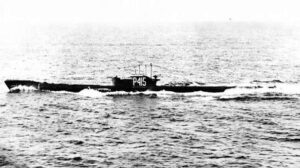 Alcide was laid down on 2 January 1945, launched on 12 April 1945 and commissioned on 18 October 1946. In 1952 she was deployed to Canada for ASW training with the Royal Canadian Navy (RCN). She was modernized. In 1968 she took part in Navy Days at Portsmouth. She was Sold to be broken up for scrap on 18 June 1974 and scrapped at Hull.
Alcide was laid down on 2 January 1945, launched on 12 April 1945 and commissioned on 18 October 1946. In 1952 she was deployed to Canada for ASW training with the Royal Canadian Navy (RCN). She was modernized. In 1968 she took part in Navy Days at Portsmouth. She was Sold to be broken up for scrap on 18 June 1974 and scrapped at Hull.
 Alderney (P416/S16/S66)
Alderney (P416/S16/S66)
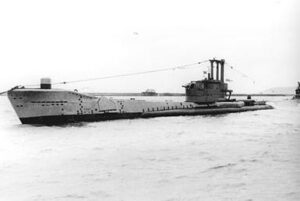 Alderney was laid down on 6 February 1945, Launched on 25 June 1945 and Commissioned on 10 December 1946. She completed three commissions between 1954 and 1963 with the 6th Submarine Squadron at Halifax in Nova Scotia for exercises with the RCN (Royal Canadian Navy) and RCAF (Air Force). In September 1952 she was replaced by HMS Artemis to fix her issues while training off Bermuda.She was modernised at Portsmouth between 1956 and 1958. In 1965 she was allocated to the 1st Submarine Squadron at HMS Dolphin. In 1965 and 1966 she at the Portsmouth Navy Days. She was decommissioned in 1966, sold for BU at Troon, Scotland on 1 February 1970.
Alderney was laid down on 6 February 1945, Launched on 25 June 1945 and Commissioned on 10 December 1946. She completed three commissions between 1954 and 1963 with the 6th Submarine Squadron at Halifax in Nova Scotia for exercises with the RCN (Royal Canadian Navy) and RCAF (Air Force). In September 1952 she was replaced by HMS Artemis to fix her issues while training off Bermuda.She was modernised at Portsmouth between 1956 and 1958. In 1965 she was allocated to the 1st Submarine Squadron at HMS Dolphin. In 1965 and 1966 she at the Portsmouth Navy Days. She was decommissioned in 1966, sold for BU at Troon, Scotland on 1 February 1970.
 Alliance (P417/S17/S67)
Alliance (P417/S17/S67)
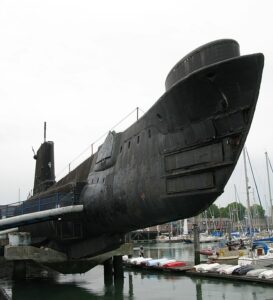 She was laid down on 13 March 1945, Launched on 28 July 1945 and Commissioned on 14 May 1947. From 9 October to 8 November 1947 she made an experimental cruise in the Atlantic, off the coast of Africa to teste her snort mast, submerged for 30 days. She was modernized between 1958 and 1960. In May 1961 she was renamed S67. On 13 January 1968, she was grounded on Bembridge Ledge, Isle of Wight but refloated with Admiralty tugs. On 30 September 1971 she suffered a battery explosion when in Portland Harbour, killed 1 sailor, injuring 14 others. She would have been decommissioned, but lingered from 1973 to 1979, at the static training boat facility HMS Dolphin instead of HMS Tabard. In August she was towed to Vosper Ship yard at Southampton to have her keel strengthened to be lifted out of the water, preserved as a memorial to British submariners in “terneal patrol” at Gosport. Since 1981 she was opened as a museum ship at the Royal Navy Submarine Museum.
She was laid down on 13 March 1945, Launched on 28 July 1945 and Commissioned on 14 May 1947. From 9 October to 8 November 1947 she made an experimental cruise in the Atlantic, off the coast of Africa to teste her snort mast, submerged for 30 days. She was modernized between 1958 and 1960. In May 1961 she was renamed S67. On 13 January 1968, she was grounded on Bembridge Ledge, Isle of Wight but refloated with Admiralty tugs. On 30 September 1971 she suffered a battery explosion when in Portland Harbour, killed 1 sailor, injuring 14 others. She would have been decommissioned, but lingered from 1973 to 1979, at the static training boat facility HMS Dolphin instead of HMS Tabard. In August she was towed to Vosper Ship yard at Southampton to have her keel strengthened to be lifted out of the water, preserved as a memorial to British submariners in “terneal patrol” at Gosport. Since 1981 she was opened as a museum ship at the Royal Navy Submarine Museum.
She is part of the National Historic Fleet but needed maintenance as many pigeons caused extensive corrosive damage and her cradles rusted away. Reapirs were announced on 30 May 2011, later financed for £3.4 million including the cofferdam and backfill below for easier access for future maintenance, and new viewing platform for visitors with access to the conning tower and casing and a gallery on land with many displays about the class. Restoration was completed by March 2014.
 Ambush (P418/S18/S68)
Ambush (P418/S18/S68)
 She was laid down on 17 May 1945, launched on 24 September 1945 and commissioned on 22 July 1947. After commissioning she joined the 3rd Submarine Flotilla in Rothesay (Scotland) and later tested a new snorkel (Snort), with extended submarine cruises in various weather conditions. She mad hers from February 1948 in Arctic waters between Jan Mayen and Bear Island, under a severe storm, and back on 18 March. She was reassigned to the 10 Submarine Flotilla at Singapore in November 1959, until 25 July 1967. She was not fully modernized, decommissioned and sold to Thos. W. Ward, Inverkeithing on 5 July 1971.
She was laid down on 17 May 1945, launched on 24 September 1945 and commissioned on 22 July 1947. After commissioning she joined the 3rd Submarine Flotilla in Rothesay (Scotland) and later tested a new snorkel (Snort), with extended submarine cruises in various weather conditions. She mad hers from February 1948 in Arctic waters between Jan Mayen and Bear Island, under a severe storm, and back on 18 March. She was reassigned to the 10 Submarine Flotilla at Singapore in November 1959, until 25 July 1967. She was not fully modernized, decommissioned and sold to Thos. W. Ward, Inverkeithing on 5 July 1971.
 Anchorite (P422/S22/S64)
Anchorite (P422/S22/S64)
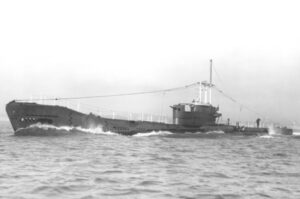 Former HMS Amphion, renamed, she was laid down on 13 August 1945, launched on 22 January 1946 and commissioned on 18 November 1947. She took part in the naval review for Queen Elizabeth II. She ran aground in Rothesay Bay (Firth of Forth) on 12 October 1956. On 3 October 1960 as part of the 4th Submarine Squadron at Sydney she hit an uncharted rock in the Hauraki Gulf (Auckland, New Zealand) under 110 feet (34 m). Lieutenant Commander W. L. Owen, was cleared of blame after the court martial. This is now the “Anchorite Rock” on maps. She was decommissioned and sold for BU on 28 July 1970, started at Troon, Scotland in August 1970.
Former HMS Amphion, renamed, she was laid down on 13 August 1945, launched on 22 January 1946 and commissioned on 18 November 1947. She took part in the naval review for Queen Elizabeth II. She ran aground in Rothesay Bay (Firth of Forth) on 12 October 1956. On 3 October 1960 as part of the 4th Submarine Squadron at Sydney she hit an uncharted rock in the Hauraki Gulf (Auckland, New Zealand) under 110 feet (34 m). Lieutenant Commander W. L. Owen, was cleared of blame after the court martial. This is now the “Anchorite Rock” on maps. She was decommissioned and sold for BU on 28 July 1970, started at Troon, Scotland in August 1970.
 Andrew (P423/S23/S63)
Andrew (P423/S23/S63)
 Andrew was Laid down on 13 August 1945, Launched 6 April 1946 and Commissioned on 16 March 1948. In September 1950 she sailed to Canada for a 3-month deployment training with the RCN and in February 1953 she was sent to Bermuda, training with the cruiser Quebec, destroyer Huron, minesweeper Portage. In June 1953 she was the first to cross the Atlantic submerged from Bermuda to the 15 June in the English Channel. She had diesel issues and her periscope malfunctioned, they were repaired while submerged. She was sent to Port Phillip Bay, Melbourne to portray the fictional USS Sawfish in the 1959 Stanley Kramer film “On the Beach”. She was solf for BU 5 May 1977 in Plymouth.
Andrew was Laid down on 13 August 1945, Launched 6 April 1946 and Commissioned on 16 March 1948. In September 1950 she sailed to Canada for a 3-month deployment training with the RCN and in February 1953 she was sent to Bermuda, training with the cruiser Quebec, destroyer Huron, minesweeper Portage. In June 1953 she was the first to cross the Atlantic submerged from Bermuda to the 15 June in the English Channel. She had diesel issues and her periscope malfunctioned, they were repaired while submerged. She was sent to Port Phillip Bay, Melbourne to portray the fictional USS Sawfish in the 1959 Stanley Kramer film “On the Beach”. She was solf for BU 5 May 1977 in Plymouth.
 Affray (P421)
Affray (P421)
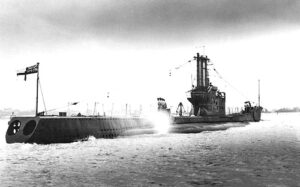 Affray was laid down on 16 January 1944, launched on 12 April 1944 and commissioned on 25 November 1945. Long story short she was lost with all hands on 16 April 1951 off Alderney. Her loss was a mystery until her wreck was rediscovered on 14 June 1951. She was explored several times since to establish the case of her loss. The most recent explanation put forward by experts was that her snort mast dropped below the surface, the float valve jammed and could not prevent water entering the sub at 13 tons per minute. With a reduced crew and trainees in the way, delay in stopping the inflow would prevent the valve shut or flooding compartment sealed off before the quantity of water was too much even when blowing all ballast. Or if there was no one alive to blow ballast. That sad affair caused all A class to be suspended from operations and examined as well. Affray was stricken formally in June after her discovery.
Affray was laid down on 16 January 1944, launched on 12 April 1944 and commissioned on 25 November 1945. Long story short she was lost with all hands on 16 April 1951 off Alderney. Her loss was a mystery until her wreck was rediscovered on 14 June 1951. She was explored several times since to establish the case of her loss. The most recent explanation put forward by experts was that her snort mast dropped below the surface, the float valve jammed and could not prevent water entering the sub at 13 tons per minute. With a reduced crew and trainees in the way, delay in stopping the inflow would prevent the valve shut or flooding compartment sealed off before the quantity of water was too much even when blowing all ballast. Or if there was no one alive to blow ballast. That sad affair caused all A class to be suspended from operations and examined as well. Affray was stricken formally in June after her discovery.
 Aeneas (P427/S27/S72/SSG72)
Aeneas (P427/S27/S72/SSG72)
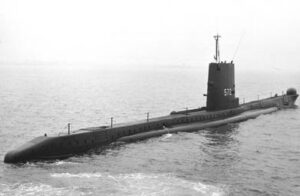 Aeneas was laid down on 10 October 1944, launched on 25 October 1945 and commissioned on 31 July 1946. She was present at the Coronation review for Queen Elizabeth II in 1953, played the “M1” in the 1967 James Bond “You Only Live Twice” and in 1972 she was hired by Vickers to trial the first British Submarine-Launched Airflight Missile (SLAM) system. This was an anti-aircraft system using a cluster of four Shorts Blowpipe missiles in extendable mast, operable against low flying aircraft while at periscope depth. She was decommissioned and BU 1974. In 2012 DNCS announced a submarine canister-based air defence system using Mistral but based on the British SLAM.
Aeneas was laid down on 10 October 1944, launched on 25 October 1945 and commissioned on 31 July 1946. She was present at the Coronation review for Queen Elizabeth II in 1953, played the “M1” in the 1967 James Bond “You Only Live Twice” and in 1972 she was hired by Vickers to trial the first British Submarine-Launched Airflight Missile (SLAM) system. This was an anti-aircraft system using a cluster of four Shorts Blowpipe missiles in extendable mast, operable against low flying aircraft while at periscope depth. She was decommissioned and BU 1974. In 2012 DNCS announced a submarine canister-based air defence system using Mistral but based on the British SLAM.
 Alaric (P441/S41)
Alaric (P441/S41)
Alaric was laid down on 31 May 1945, launched on 18 February 1946 and commissioned on 11 December 1946. She served at the home station all her life, modernised in the 1960s. In 1953 she was at the Fleet Review for Queen Elizabeth II. In 1968 she in the 1st Submarine Squadron, HMS Dolphin and in Navy Days, Portsmouth. She was decommissioned and sold to Thos. W. Ward by July 1971.
 Artemis (P449/S39/S49)
Artemis (P449/S39/S49)
Artemis was laid down on 28 February 1944, launched on 26 August 1946 and commissioned on 15 August 1947. By September 1952 she was deployed to Canada for ASW training with the RCN. She replaced the damaged Alderney off Bermuda. In 1953 she took part in the coronation Fleet Review. She was modernized. On 1 July 1971 she sank in 18 feet (5.5 m) of water while moored at HMS Dolphin, Gosport, during refuelling, dipping by the stern just as she prepared using aft externals tubes. They filled and she sank but all aboard escaped after a decisive action by four crew members. She was raised on 6 July, decommissioned, sold on 12 December 1971.
 Artful (P456/S56/S96)
Artful (P456/S56/S96)
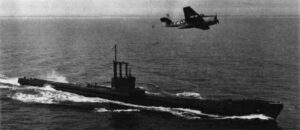 Artful was laid down on 8 June 1944, launched on 22 May 1947 and commissioned on 23 February 1948. No logs nor data yet. She was Sold to be broken up for scrap, 16 June 1972, Broken up at Cairnryan, June 1972.
Artful was laid down on 8 June 1944, launched on 22 May 1947 and commissioned on 23 February 1948. No logs nor data yet. She was Sold to be broken up for scrap, 16 June 1972, Broken up at Cairnryan, June 1972.
 Acheron (P411/S11/S61)
Acheron (P411/S11/S61)
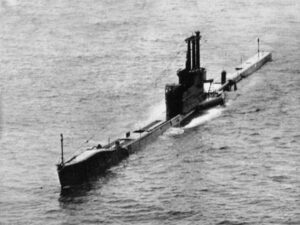 Last of the class, Acheron (a river in hell) was laid down on 26 August 1944, launched on 25 March 1947 and commissioned on 17 April 1948. She took part in the 1953 Coronation Review for QE II and carried out “General Naval Service”in home waters until late 1964. She lost contact after a geomagnetic storm in February 1956 (top solar cycle 19) massively interfering with radio communications. Fearing she was lost, a search was lost until she was found surfaced underway. From August to December 1959, she took part in a cruise to South Africa and Pakistan. She was decommissioned and BU in 1972, yard J Cashmore; Newport.
Last of the class, Acheron (a river in hell) was laid down on 26 August 1944, launched on 25 March 1947 and commissioned on 17 April 1948. She took part in the 1953 Coronation Review for QE II and carried out “General Naval Service”in home waters until late 1964. She lost contact after a geomagnetic storm in February 1956 (top solar cycle 19) massively interfering with radio communications. Fearing she was lost, a search was lost until she was found surfaced underway. From August to December 1959, she took part in a cruise to South Africa and Pakistan. She was decommissioned and BU in 1972, yard J Cashmore; Newport.
Note: Ace (P414) and Achates (P433) were launched but never completed, used as targets and sunk after high depht dive pressure hull tests.
Read More/Src
Books
Brown, DK (1966). Design and Construction of British Warships 1939-1945, V. II, Official Record. NIP
Paul Kemp (1990). The T-Class submarine. Arms and Armour. p. 127.
“Boat Database – Andrew”. www.rnsubs.co.uk. Barrow-in-Furness Branch of the Submariners Association. Archived 20 March 2014.
Links
navypedia.org
maritimequest.com/
web.archive.org navypedia.org brit_ss_a.htm
en.wikipedia.org Amphion-class_submarine
navweaps.com Mines.php
rnsubs.co.uk/ amphion-class
web.archive.org submarinesonstamps.co.il
commons.wikimedia.org photos
Videos
Visit of HMS Alliance.
Model Kits
scalemates.com/ starling-models hms-alliance


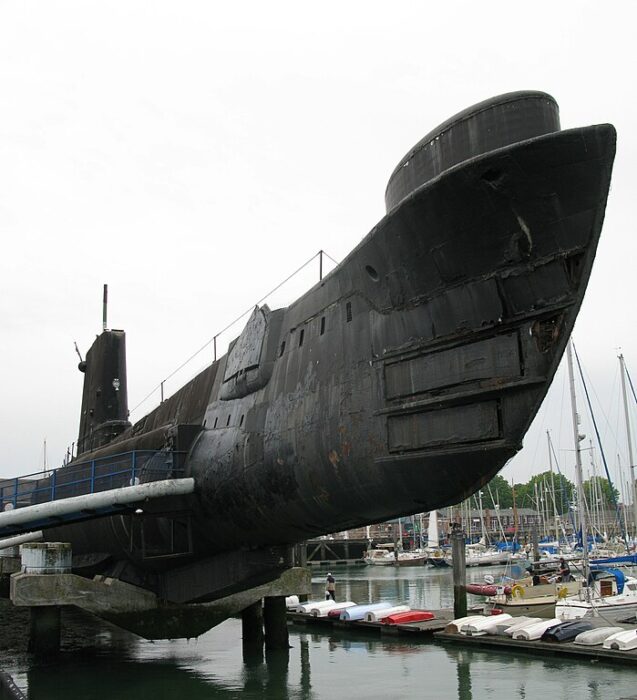
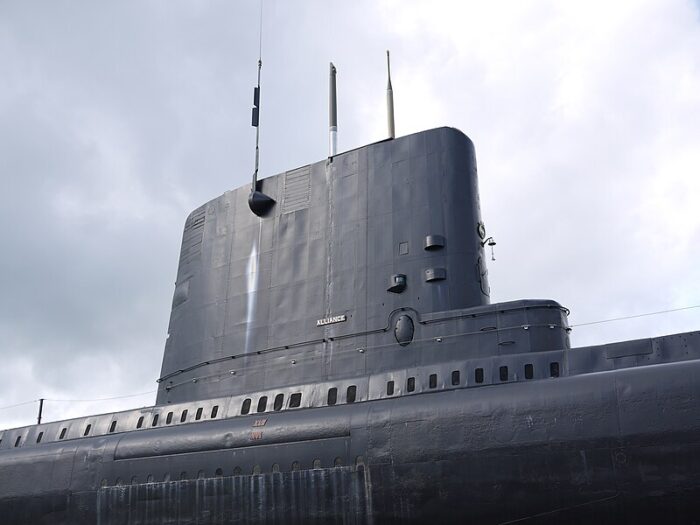
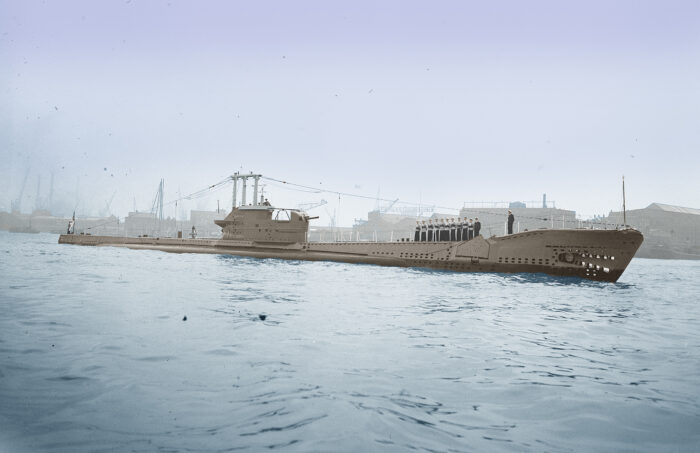
 Latest Facebook Entry -
Latest Facebook Entry -  X(Tweeter) Naval Encyclopedia's deck archive
X(Tweeter) Naval Encyclopedia's deck archive Instagram (@navalencyc)
Instagram (@navalencyc)





 French Navy
French Navy Royal Navy
Royal Navy Russian Navy
Russian Navy Armada Espanola
Armada Espanola Austrian Navy
Austrian Navy K.u.K. Kriegsmarine
K.u.K. Kriegsmarine Dansk Marine
Dansk Marine Nautiko Hellenon
Nautiko Hellenon Koninklije Marine 1870
Koninklije Marine 1870 Marinha do Brasil
Marinha do Brasil Osmanlı Donanması
Osmanlı Donanması Marina Do Peru
Marina Do Peru Marinha do Portugal
Marinha do Portugal Regia Marina 1870
Regia Marina 1870 Nihhon Kaigun 1870
Nihhon Kaigun 1870 Preußische Marine 1870
Preußische Marine 1870 Russkiy Flot 1870
Russkiy Flot 1870 Svenska marinen
Svenska marinen Søværnet
Søværnet Union Navy
Union Navy Confederate Navy
Confederate Navy Armada de Argentina
Armada de Argentina Imperial Chinese Navy
Imperial Chinese Navy Marinha do Portugal
Marinha do Portugal Mexico
Mexico Kaiserliche Marine
Kaiserliche Marine 1898 US Navy
1898 US Navy Sovietskiy Flot
Sovietskiy Flot Royal Canadian Navy
Royal Canadian Navy Royal Australian Navy
Royal Australian Navy RNZN Fleet
RNZN Fleet Chinese Navy 1937
Chinese Navy 1937 Kriegsmarine
Kriegsmarine Chilean Navy
Chilean Navy Danish Navy
Danish Navy Finnish Navy
Finnish Navy Hellenic Navy
Hellenic Navy Polish Navy
Polish Navy Romanian Navy
Romanian Navy Turkish Navy
Turkish Navy Royal Yugoslav Navy
Royal Yugoslav Navy Royal Thai Navy
Royal Thai Navy Minor Navies
Minor Navies Albania
Albania Austria
Austria Belgium
Belgium Columbia
Columbia Costa Rica
Costa Rica Cuba
Cuba Czechoslovakia
Czechoslovakia Dominican Republic
Dominican Republic Haiti
Haiti Hungary
Hungary Honduras
Honduras Estonia
Estonia Iceland
Iceland Eire
Eire Equador
Equador Iran
Iran Iraq
Iraq Latvia
Latvia Liberia
Liberia Lithuania
Lithuania Mandchukuo
Mandchukuo Morocco
Morocco Nicaragua
Nicaragua Persia
Persia San Salvador
San Salvador Sarawak
Sarawak Uruguay
Uruguay Venezuela
Venezuela Zanzibar
Zanzibar Warsaw Pact Navies
Warsaw Pact Navies Bulgaria
Bulgaria Hungary
Hungary

 Bundesmarine
Bundesmarine Dutch Navy
Dutch Navy Hellenic Navy
Hellenic Navy Marina Militare
Marina Militare Yugoslav Navy
Yugoslav Navy Chinese Navy
Chinese Navy Indian Navy
Indian Navy Indonesian Navy
Indonesian Navy JMSDF
JMSDF North Korean Navy
North Korean Navy Pakistani Navy
Pakistani Navy Philippines Navy
Philippines Navy ROKN
ROKN Rep. of Singapore Navy
Rep. of Singapore Navy Taiwanese Navy
Taiwanese Navy IDF Navy
IDF Navy Saudi Navy
Saudi Navy Royal New Zealand Navy
Royal New Zealand Navy Egyptian Navy
Egyptian Navy South African Navy
South African Navy






























 Ukrainian Navy
Ukrainian Navy dbodesign
dbodesign